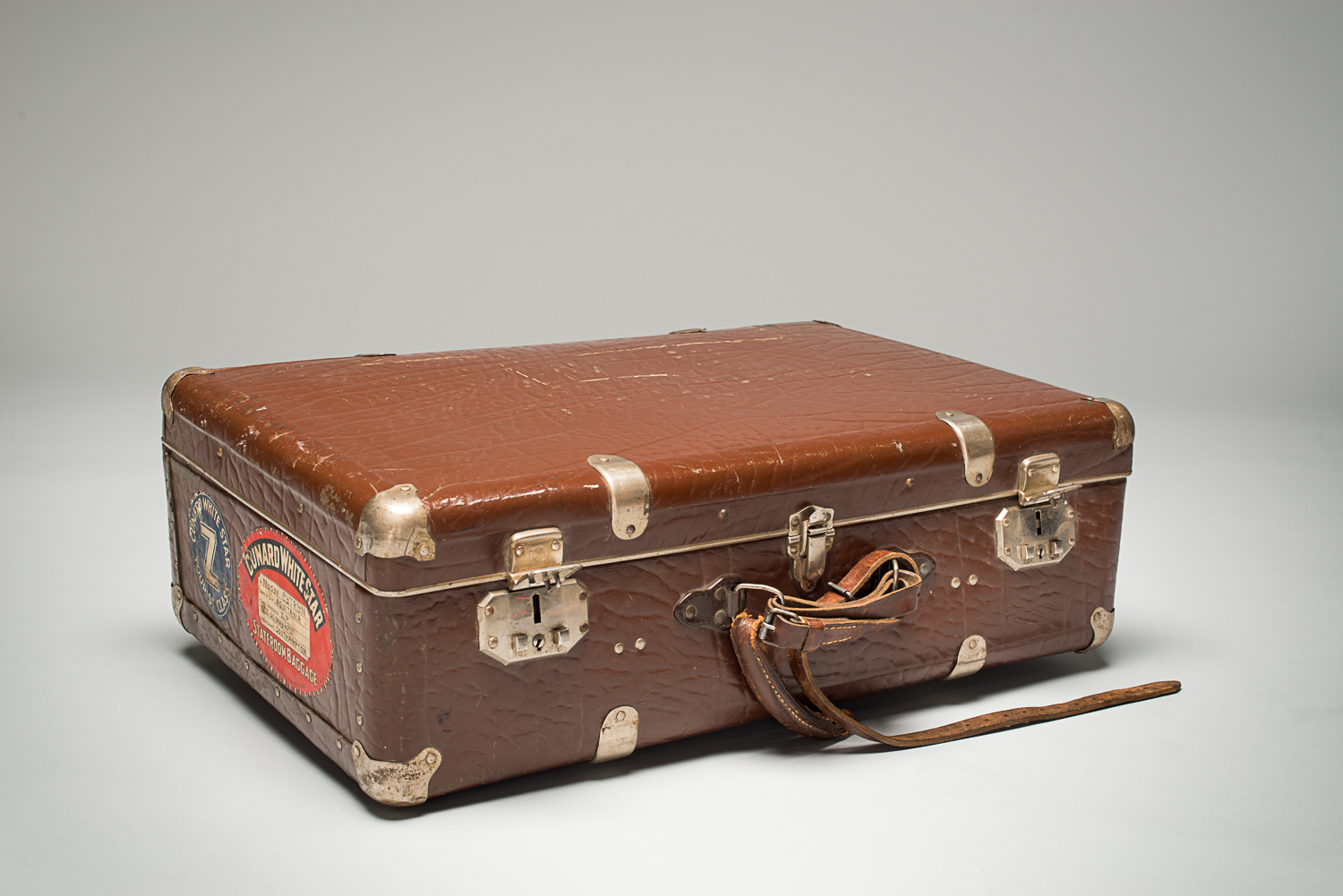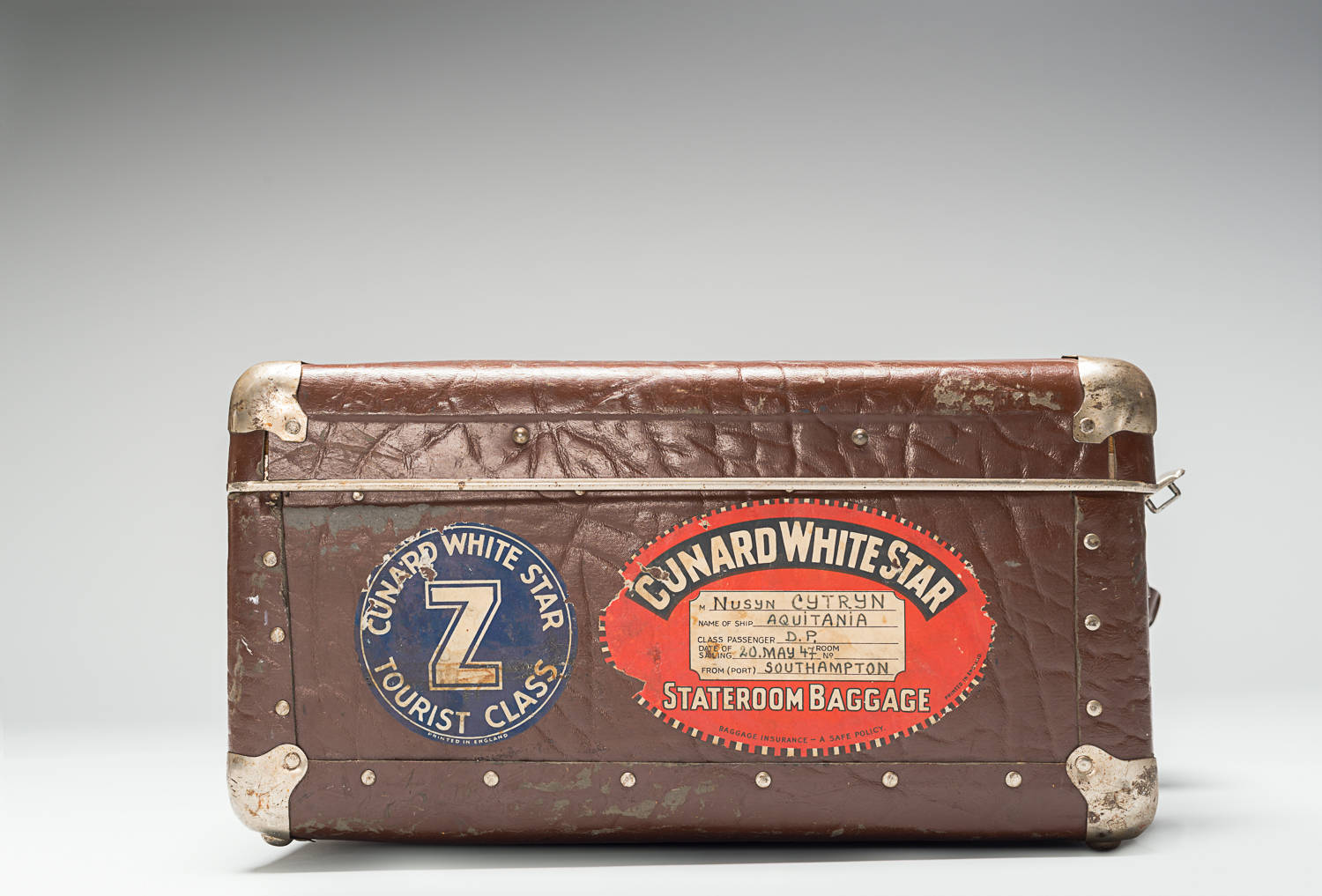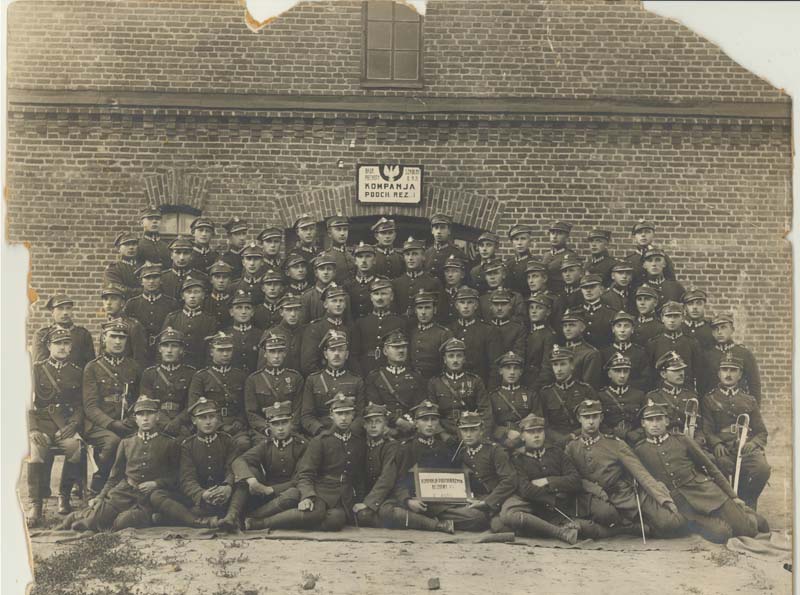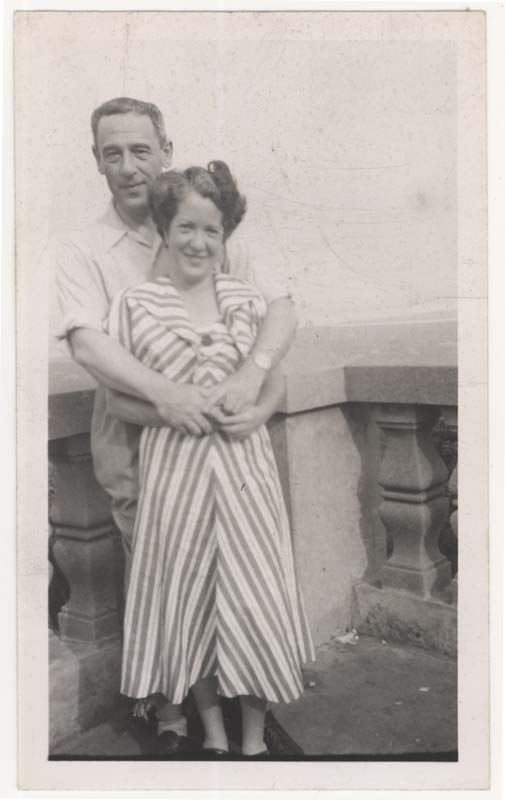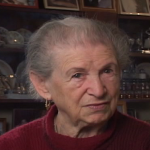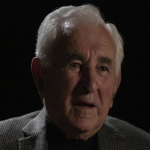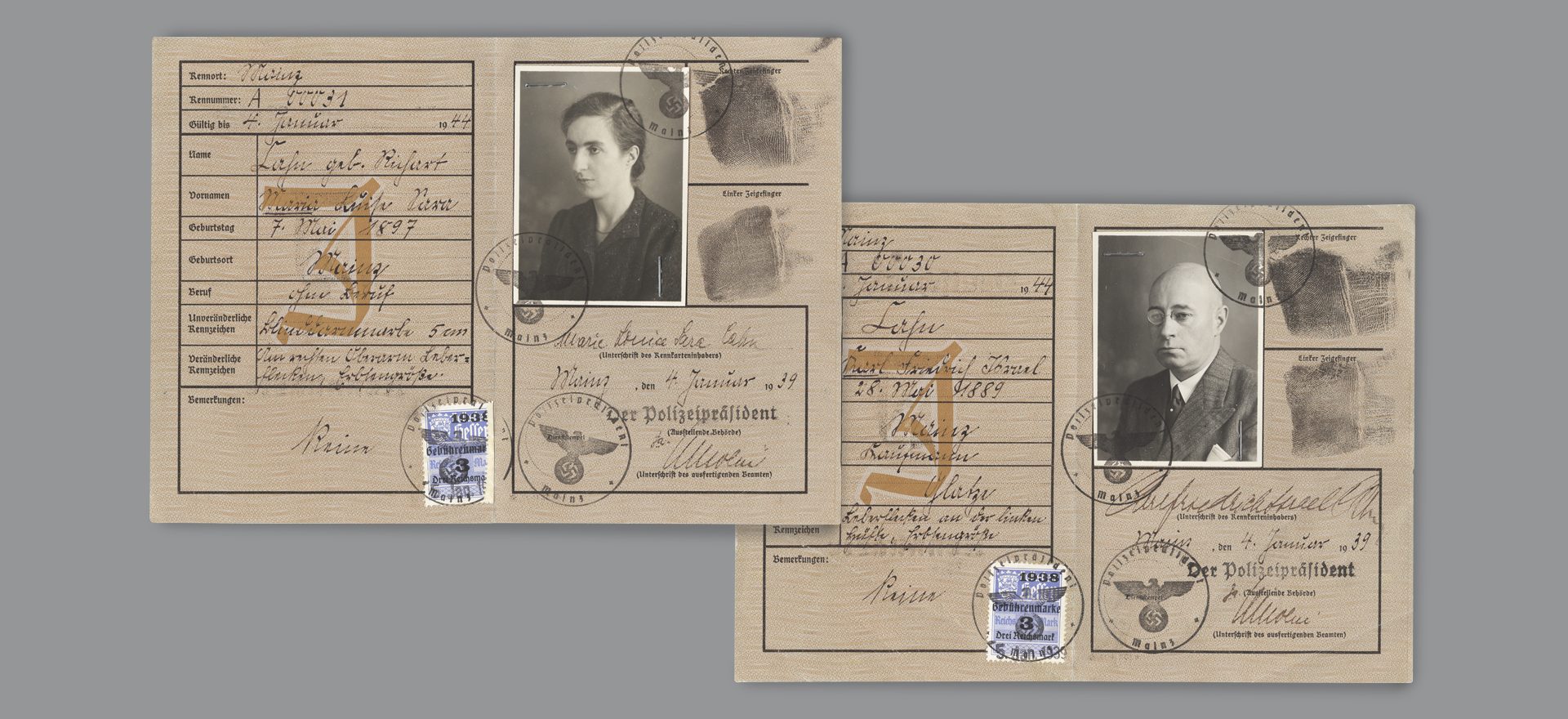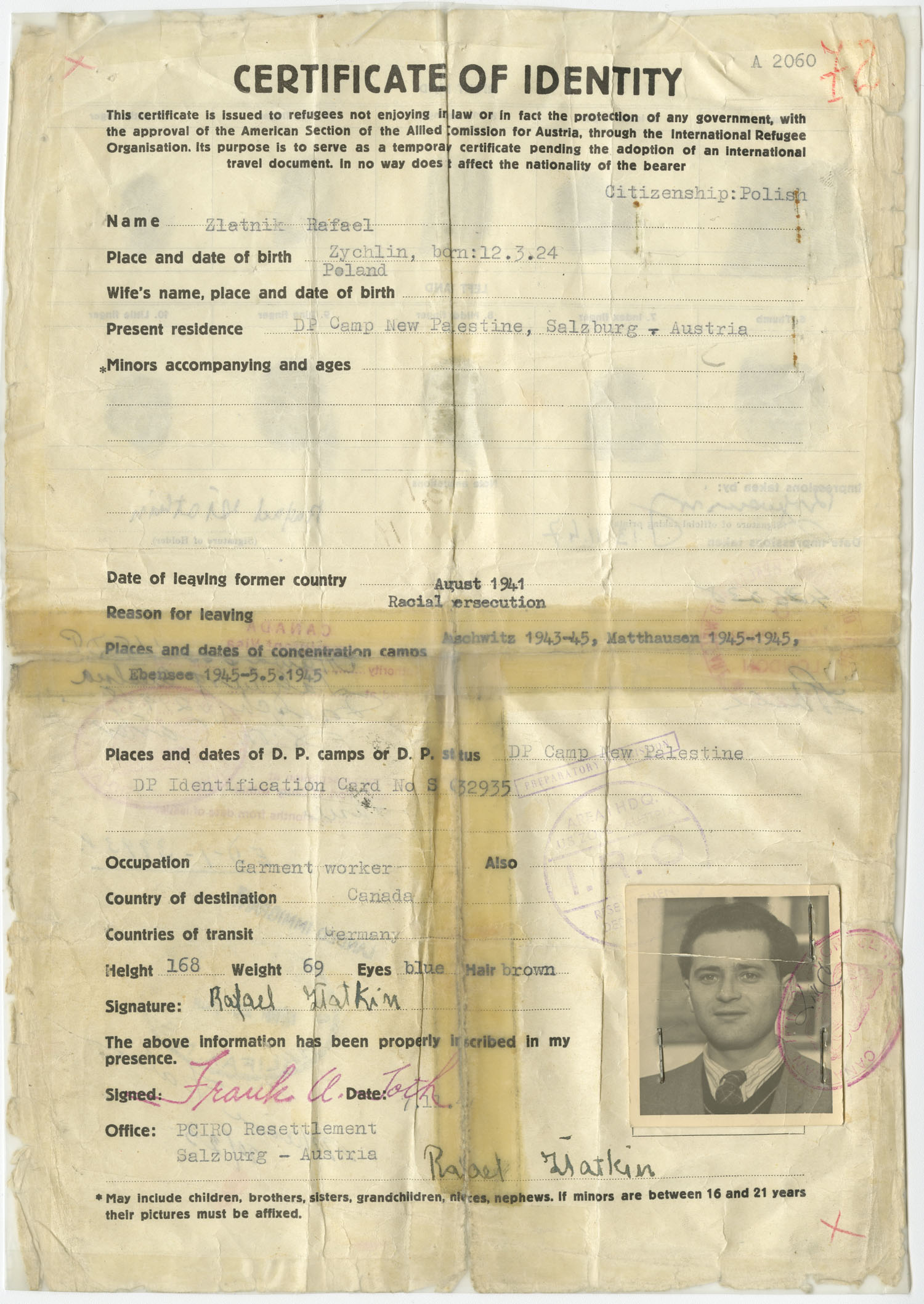Nathan Cytryn brought this suitcase with him when he immigrated to Canada in 1947. It still has the stickers from the R.M.S. Aquitania, the ship that Nathan took across the Atlantic on route to Halifax. The broken handle has been repaired with a wrapped belt. Nathan moved to Montreal to reunite with his family members who sponsored his immigration.
Nathan Cytryn, Officer in the Polish Army
Before the war, Nathan lived in Poland with his wife Salomea and son Jakob. His two brothers immigrated to Canada, but the Cytryns remained in Poland to stay close to Salomea’s family. As an officer in the Polish army, Nathan was deployed in September 1939 when Germany invaded the country. He was captured and sent to a prisoner-of-war camp in Germany, where he remained until liberation. During his imprisonment, Nathan’s wife and son were deported to the Warsaw ghetto and later died.
Nathan moved to Canada after the war to live near his remaining family. He re-married in 1948.
His grand-daughter Caryn Shacter donated this suitcase to the Montreal Holocaust Museum in 2016.
This project is part of the implementation of the Plan culturel numérique du Québec


